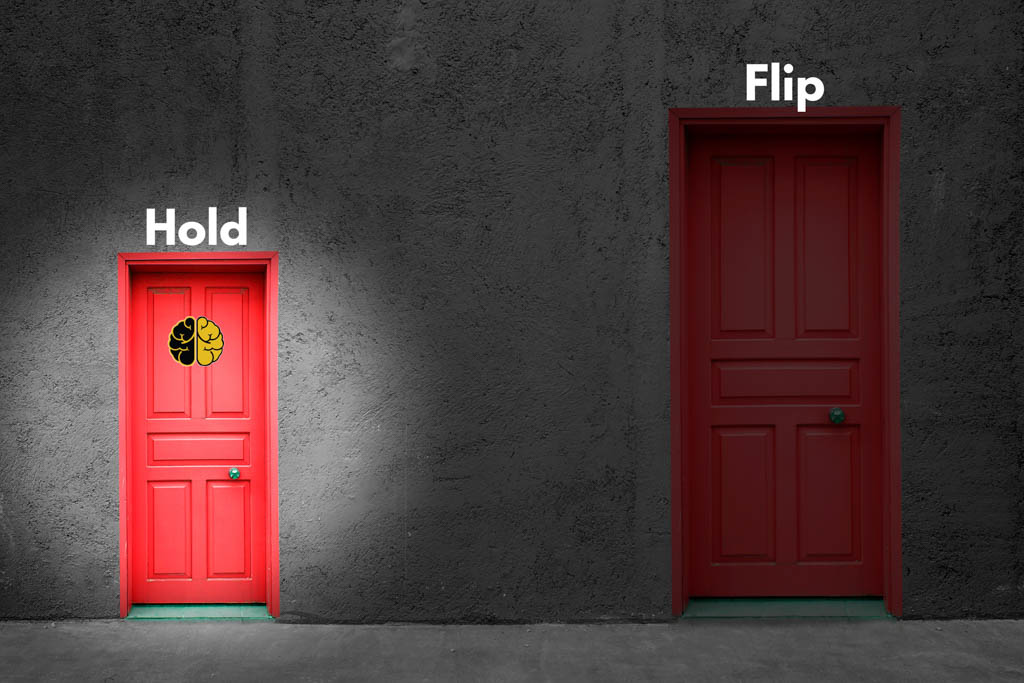The “flip” mentality is everywhere.
If you watch television, you’ll see homes being bought, repaired and “flipped” as a business model.
If you’re on Instagram, you’ll see software entrepreneurs talking about their “exits”—the sale of their company to a larger one.
Even in the fitness industry, I often see posts from gym owners who are trying to sell their business so they can “work on other projects.”
But here’s the truth: If the gym is successful, it doesn’t need the owner’s attention or oversight. Profitable gyms don’t require an “exit” to create wealth for the owner.
What If Holding Generated Profit?
I learned the “buy and hold” strategy from Robert Kiyosaki in his book “Rich Dad Poor Dad.” The idea is so powerful—and so counter-culture—that I keep 20 copies of the book in my office at all times and hand them out to visitors. Here’s the idea, in a nutshell:
Buy a building.
Rent it out.
Profit forever.
Simple, right? But look at the math:
If you buy a house for $200,000, spend $40,000 on renovations to clean it up and sell it at the top of the market for $275,000, you can earn $35,000.
Once.
For a ton of effort and risk. What if you don’t sell? What if the renovation costs are higher than expected? What if you actually lose on the deal? It would take at least three successful flips to cover the downside of one bad flip.
Conversely, Kiyosaki’s method goes like this:
Buy a house for $200,000.
Break the mortgage down into the smallest monthly payments possible.
Rent it out.
Keep collecting rent forever, even when the mortgage is long gone.
After reading Kiyosaki’s book, I immediately began planning to buy my first commercial building. Now my buildings pay me over $100,000 per year in rental income—and they’ll continue to do it forever. I don’t have to keep buying and flipping buildings.
That’s passive income. That’s a cash-flow asset. And it’s scalable. I’m not trading any time for that money: Someone else cuts the grass and clears the snow away.
Creating Assets
When I understood the math for real estate, I asked myself: “Could someone do this for his or her business?”
And that began the quest to turn my first business into a cash-flow asset: Something that would operate with excellence and pay me even when I wasn’t there.
I couldn’t find a model to follow anywhere.
Every owner of a service business—both locally and online—appeared to have either bought himself or herself a job for life or to be building toward a sale—or both. I had to build the model, and it took me 10 years.
Then we had to prove the model could work in other gyms. That took us more years. It was hard, painful work. I lost staff and clients and even a few friends. But creating a sustainable business that would feed my family when I wasn’t there was worth it.
Now we teach other gym owners how to do it, sometimes in less than three years.
When your gym runs itself, we call you a Tinker. Then you have a choice: You can spend your time doing what makes you most happy. Is that working in your gym? Awesome. Is it starting your T-shirt company, opening a second gym or buying real estate? Also awesome.
All those things are great. But you should be able to go to zero time in your gym—and still get paid anyway.
Your Success Plan
The best time to think about your “exit” is before you open your business. If you plan to sell it, you’ll want to build a succession plan. But you don’t have to sell it: You can build a success plan instead.
And success means self-sustainability. It means continuity for your members, cash flow for life for you and careers for your coaches. And as I wrote yesterday, the real value of keeping your gym alive goes far beyond a one-time payout: Hundreds of thousands of dollars to you, lives saved, an ongoing legacy in your community.
How do you make those happen? Through mentorship.
The purpose of our mentorship program is to make you wealthy, your coaches happy and your community healthy.
Don’t exit.
Which stage of entrepreneurship are you in? Take our 20-question quiz to find out and get the exact steps you need to take your business to the next level.

